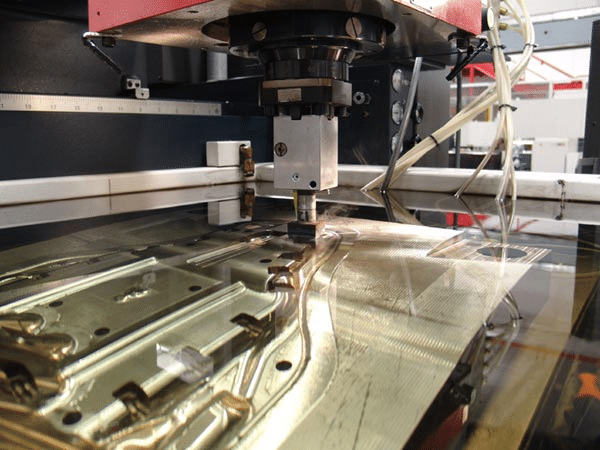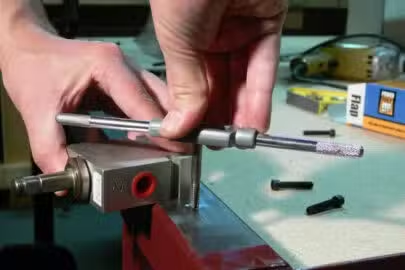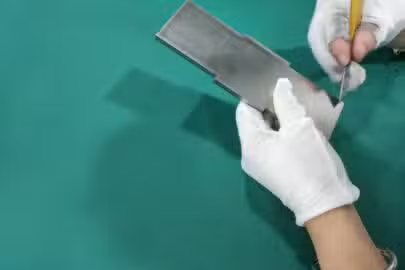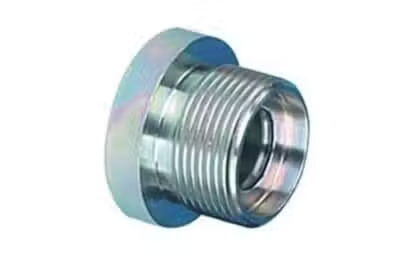The battle between traditional and non-traditional machining techniques persists. Electrical discharge machining (EDM) is a versatile and one-of-a-kind tool in the machinist’s world. Instead of a sharp cutting tool, the process cuts through material with sparks, opening up new manufacturing possibilities.
However, it is not always obvious when EDM should be used. Some engineers may be so accustomed to CNC machining technology that they fail to consider using EDM for their prototypes or parts – even when EDM could vastly improve the end product’s quality or reduce overall project costs.
This article provides a quick overview of EDM by focusing on ten specific situations where EDM may be preferable to conventional machining.
What Is EDM?
EDM, or Electrical Discharge Machining, is a different way to cut things. It uses electric sparks to take off stuff from the thing being worked on. In EDM, a tool called an electrode and something we work on called a workpiece is put into a special fluid. This fluid is usually just clean water without any ions. The power supply connects the tool and workpiece, causing sparks between them. These releases make strong heat, melting and turning the stuff into vapors. This leads to the exact taking away of material.
There are two main types of EDM:
- Wire EDM (WEDM): This tool uses a thin wire to cut through the material.
- Sinker EDM (S-EDM): Uses a tool with the shape of an electrode to make holes or patterns in what it is working on.
The advantages of EDM over traditional machining include:
- Power to get through tough metals easily.
- Ability to machine complex shapes
- Improving the clarity of small details.
It’s not suitable for all kinds of work, though. Aside from being unsuitable for making plastics, EDM is much slower than regular machining. That’s why CNC is usually better in most cases.
What Is Conventional Machining?
Conventional machining is a group of the old-fashioned process of manufacturing things. They use mechanical power to change or take out material from the part being worked on. In these ways, physical tools like sharp knives or rough grit are used to get what we want. Ordinary machining methods include turning, taking out material from a spinning workpiece, and milling with rotating tools for shaping something like clay or dough. Drilling makes holes, and grinding gives delicate finishes using an abrasive wheel.
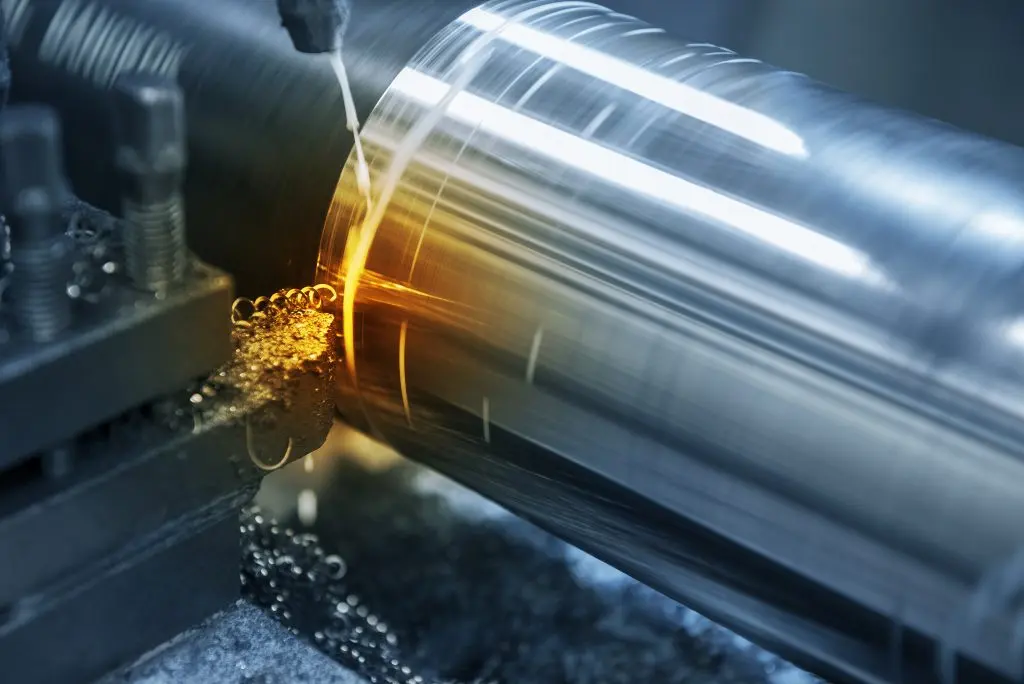
Broaching, sawing, and other processes make machines more efficient by combining different machining skills. Traditional machining using mechanical power is very flexible. It can work on many types of materials and gives exact desired shapes or sizes.
Even though they work well, sometimes people choose methods like Electrical Discharge Machining (EDM) because of special benefits. These include high precision when working with hard materials and the ability to produce complex shapes better than regular processes can do.
Below are the ten top situations where EDM is better than conventional machining:
Hardened Materials
EDM, or electrical discharge machining, is different from machining techniques because it can work well on hard materials like steel, carbides, and ceramics. Conventional cutting has a hard time with these materials because they are very strong. This leads to too much wear on the tools and less speed at work. The way EDM works, using controlled electric sparks for the exact cutting of stuff, lets it carefully and reliably make difficult shapes in hardened things. This means EDM is a top pick in businesses where strength matters most. It guarantees long-lasting and precise final parts.
EDM Can Machine Hardened Steel
Electrical Discharge Machining (EDM) is a helpful and fast choice when making hard steel. Traditional ways of making things don’t always work well with hard steels. However, EDM fixes this problem by using teamed-up electricity bursts. This no-touch method lets EDM take away bits of material just right. This makes it possible for them to make detailed pieces with exactness and dependability from tough steel that’s been hardened. Factories that need strong and long-lasting parts, like car makers and tool creators, find EDM helpful in getting detailed shapes in hard materials.
EDM Can Machine Carbides and Ceramics
Electrical Discharge Machining (EDM) is a great way to make parts with tricky shapes. This process can very carefully wear down stuff using controlled electrical surges. This allows for making complex inside structures with no equal accuracy. Machining EDM can make complex shapes using lines, holes, or other things in many materials. It is a great way to do this. This makes it a popular choice in businesses where detailed inside details are important, like making medical devices and planes.
Complex Shapes
EDM is very good at making hard shapes. It’s a useful way for businesses with many complicated shapes to get their work done. Unlike regular cutting, which can be hard and take a long time to make detailed shapes, EDM’s non-touch way lets you make complex parts quickly without needing many steps. Using EDM in industries like aerospace, medical, and other molds is very important. This is because these jobs need to be accurate and have complicated shapes to work well.
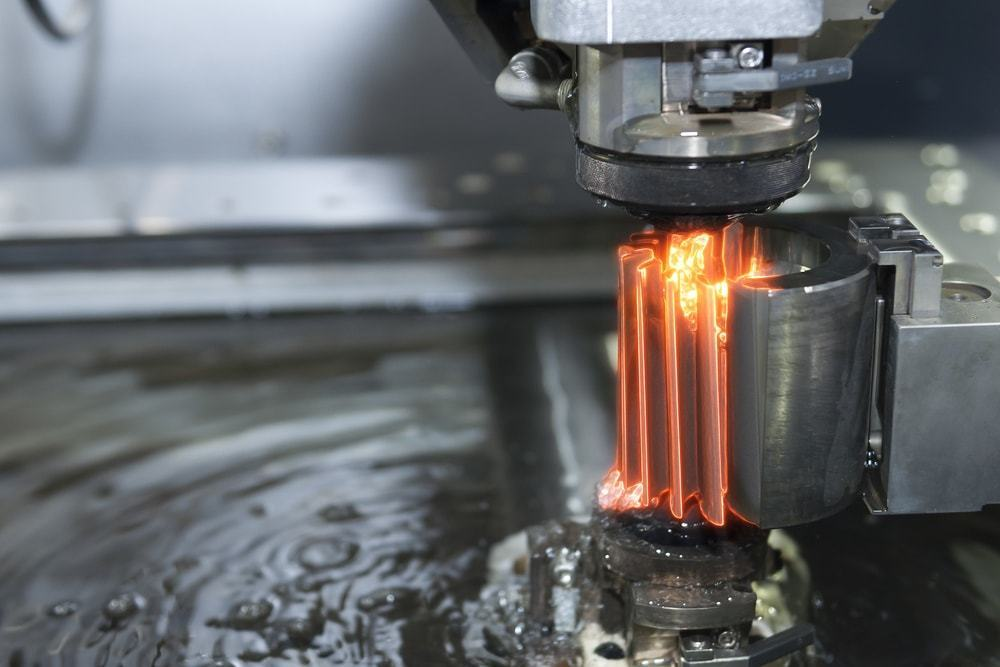
EDM Can Machine Complex Internal Features
Electrical Discharge Machining (EDM) is a great way to make parts with tricky inside shapes. This process can very carefully wear down stuff using controlled electrical surges. This allows for making complex inside structures with no equal accuracy. EDM can make complex shapes using lines, holes, or other things in many materials. It is a great way to do this. This makes it a popular choice in businesses where detailed inside details are important, like making medical devices and planes.
EDM Can Machine Complex Cavities and Pockets
For making intricate holes and spaces, EDM is the best choice. Conventional machining may be bad at shaping complex stuff, but EDM’s no-touch feature and the ability for tiny details make it great at creating small holes or spaces. This is very important in places like making moulds and dies, where it’s necessary to get just the right shape of cavities for making excellent products.
Brittle Materials
EDM’s non-contact method makes exact cutting without causing cracks when working with brittle materials like ceramics and glass. Traditional ways of cutting things often put strong materials under force, causing harm. EDM’s controlled electric sparks give a kinder way. This makes it preferred in jobs where keeping soft stuff safe is important. This is very important for use in optics, electronics, and high-tech materials.
EDM Can Machine Brittle Materials Without Cracking
One great thing about Electrical Discharge Machining (EDM) is its power to work on hard things without making them crack. Conventional CNC machining can sometimes break brittle materials because they are naturally prone to breaking. But, the wire EDM cutting process doesn’t touch anything. It uses electricity that can be managed and gets the job done without putting too much stress on what it’s working on. This stops things from breaking easily. Using EDM is great for working with hard things like ceramics or glass. It’s perfect because it gives high accuracy but doesn’t harm the materials being worked on.
EDM Produces Minimal Thermal Stresses in Brittle Materials
Furthermore, EDM has another benefit when it comes to brittle materials. It produces less heat shock. Conventional CNC machining that gets very hot can cause heat stress. This is bad for brittle materials and can damage their strength. EDM’s low-temperature machining process helps with this worry. That’s why it is a good choice for uses where keeping the material strong and reducing stress are very important, like making some electrical parts.
Thin Sections and Delicate Areas
EDM is the best for working with thin parts and delicate areas, as it doesn’t cause damage. Unlike normal ways that might use force on what we’re working with and could damage its structure, EDM keeps delicate parts safe because it is a non-contact process. This feature makes EDM good for jobs where being careful with thin or delicate parts is very important, like making electronics, medical tools, or complex molds.
EDM Can Machine Thin Sections Without Damage
EDM is very good at cutting thin parts without causing harm. This can be tricky, but it’s a talent that EDM shines in. The good part about EDM is that it doesn’t touch the thing being worked on. This means no force is applied, and it keeps things from getting bent or damaged in thin parts. This ability is very helpful in businesses like electronics and tiny electronics. It’s important when making thin parts that need careful crafting without harming the structure.
EDM Can Machine Delicate Areas With Precision
EDM is special because it can work in delicate areas requiring precision. When handling complicated parts or delicate elements, EDM’s controlled electrical bursts allow fine details to be made without causing harm. This makes it a perfect way to use in activities where careful measurement is important, like making medical gadgets. Precise and delicate work is often needed for things to be implanted or used during operations.
Electric Discharge Machining is Non-Contact
In EDM, you take away material using controlled electricity. This makes sure the process is smooth and accurate without touching anything directly. This feature makes EDM perfect for uses where keeping delicate or important pieces safe is very important.
EDM Does Not Require Physical Contact for Machining
An important feature of Electrical Discharge Machining (EDM) is its hands-off way. Unlike old ways of cutting, EDM doesn’t need a direct touch between tools and the thing being worked on. Instead, it uses controlled electric sparks to wear material away. This gives a big benefit over others. This doesn’t touch feature is important so delicate or hard work things don’t get hurt by force. EDM is great for jobs where the top goals are keeping material safe and not causing damage.
EDM Produces Little to No Tools Wear
Also, EDM is different because it causes very little damage to the tool. The breakdown of stuff because of electricity does not need the tool to physically touch what it’s working on. This helps make tools last longer and stronger. This feature makes EDM a cheap choice. It works well when you need to use heavy machines for long periods because it cuts down the number of times tools are replaced. This helps keep good quality machining over time with little change needed later.
Roughing and Finishing
One good thing about EDM is it can do both rough and finished jobs in one machine process. Usually machine work often needs different steps for rough and fine details, which makes things take longer. EDM’s two abilities simplify making things, removing the need for extra steps and shortening production time. This usefulness is very good in airplane and plastic making, where parts need to be exact and smooth.
EDM Can Both Rough and Finish in a Single Process
One of the big benefits of EDM is its ability to do cutting and smoothing jobs in just one machine process. This two-in-one use makes things easier by eliminating the need for other steps. This means more speed and less time spent on production. Businesses like aerospace and mold-making help from this changing ability. The skill of roughing and finishing in one go is good for quickly getting very exact parts, which benefits these companies.
EDM Produces Exceptionally Smooth Finishes Without Secondary Ops
EDM is the best when we talk about getting a very smooth finish. EDM can make thin surface finishes without needing extra steps like polishing or grinding because it’s meticulous. This not only saves time but also makes sure the result is up to quality standards. Making things look good and have quality is very important in some industries. EDM is the best choice for getting great-looking surfaces because it helps make molds or special parts that must be perfect.
Hard-to-Machine Alloys
EDM can handle issues caused by difficult-to-machine metals easily. This includes things like Inconel and Titanium. These metal mixes can cause issues and wear on tools during usual machine work. The way EDM works and its ability to handle tough stuff make it a top choice for making parts from hard metals. It gives the same and right results, making it a good option for businesses needing to do well with parts from tough materials like airplane and engine engineering.
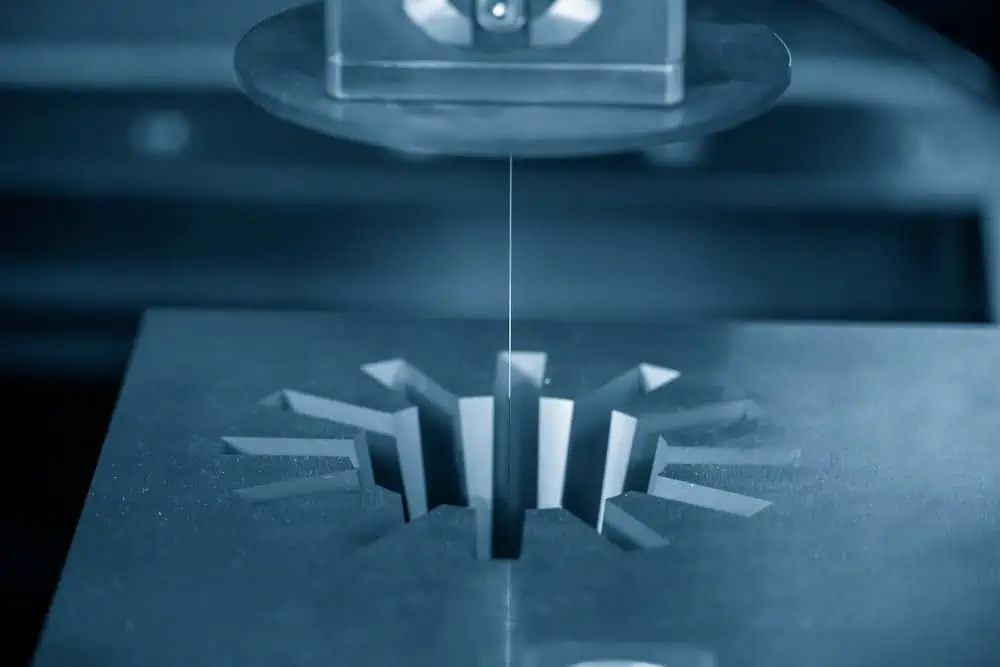
EDM Can Easily Machine Hardened Alloys Like Inconel and Titanium
Electrical Discharge Machining (EDM) is a better option for making hard alloys. Things like Inconel and Titanium, which are tough, can often make it difficult to cut metal normally. But, EDM can quickly and easily cut these tough materials. The EDM process uses electricity in a controlled way to shape parts made of hard materials like Inconel and Titanium. People often use this in airplanes and cars because it works well with these strong metals.
EDM Produces Consistent Results With Hard-to-Machine Alloys
Keeping to a pattern is very important when working with hard metals, and EDM does this good. The process can produce same results every time, no matter how tough the material is. This means we get reliable and same results when making things. This is very important in businesses where parts made from hard-to-make alloys are key to a product’s performance and reliability, especially in making race car engine parts or space things.
Avoiding Damage From Heat and Vibration
Heat and vibration can cause damage to tools and machines. This could change the material’s qualities and make it less accurate in measurements. EDM deals with this worry by causing little heat damage in just one area of the object being worked on. The controlled electrical sparks make heat in a small area, lowering the chance of heat and shape problems. Moreover, EDM produces less shaking and handle power needs, making it steady for cutting. This makes EDM the chosen way when we need to avoid breaking things and want very accurate results. This is often needed in making fragile electronic parts or detailed molds.
EDM’s Thermal Impact is Minimal and Highly Localized
Heat damage is a big issue in machines, especially when handling delicate materials. EDM solves this problem by causing a tiny and focused heat effect on the object being worked on. Using electricity, we create heat in a small area, lowering the chances of things getting too hot and changing shape all over the main piece. This special feature is very helpful in jobs where material qualities are important. This can be seen in medical device making or creating high-quality optical parts.
EDM Produces Minimal Vibrations, and Process Forces
Vibraron and pushing forces can harm both equipment and parts. This may result in wrong-cutting jobs and possible damage to them. EDM doesn’t touch much and uses very little physical force. This makes it give off hardly any shaking or pressure during the process. This makes EDM a good choice when you need to avoid damage and get a lot of accuracy. It’s very important for making delicate electronic parts or detailed molds.
Precision in Micro-Machining
EDM is a top way to make things in applications that need precision at very small sizes. Conventional ways of cutting things might have trouble getting the small details needed in micro-machining because they don’t work well with small tools and strong forces. EDM is very good at micro-machining because it doesn’t touch and uses heat to wear things down. It lets you make small details and fine designs very accurately. This makes it popular in electronics, medical tools, and tiny optical stuff.
Versatility in Exotic Materials
EDM shows its versatility when working with exotic materials like superalloys, composites, or fancy ceramics. Conventional ways of cutting things can have problems with these special materials because they are hard or wear down other things too much. EDM works well with any kind of material, no matter what it’s made from. This makes it perfect for jobs that use lots of technology, work in space, or make special stuff like rare materials because exactness is very important there.
Conclusion
EDM machining is an essential aspect of any toling or manufacturing process. This guide has shown you why EDM machining is better than conventional aching. If you need the best EDM machining services for your production needs, then you need a trustworthy EDM machining service provider. One of the best EDM service providers is Zintilon, which offers accuracy in using our cutting-edge equipment and the assistance of a knowledgeable staff. Contact us today to get started!
Read More
- Black Oxide Finish: Techniques, Benefits and Applications – Zintilon
- Laser Cutting: A Look at its Pros and Cons – Zintilon
- Understanding CNC Machining: A Guide to Common CNC Machine Types and Their Uses – Zintilon
- Everything You Need to Know About CNC Turning – Zintilon
- How CNC Machining Services Ensures Quality in Manufacturing – Zintilon
